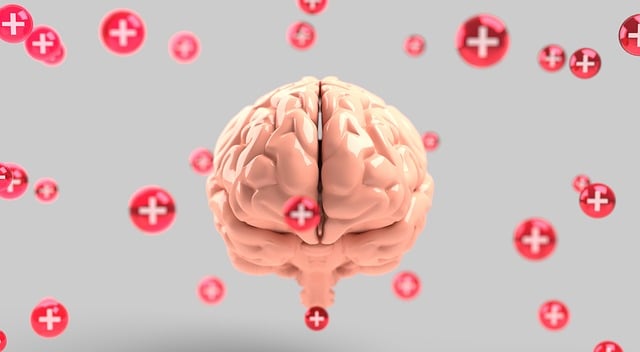Mental health professionals face unique challenges supporting children through parental divorce, demanding tailored risk management strategies and coping skills development. Effective therapy involves recognizing these issues, establishing clear boundaries, and integrating trauma support services for safe, nurturing environments. Professionals play a crucial role in identifying vulnerable kids, assessing practice environments, and implementing tailored interventions based on historical experiences, family dynamics, and cultural backgrounds. Holistic approaches, including mindfulness techniques, promote long-term mental health recovery while crisis response strategies ensure professionals can navigate complexities, de-escalate situations, and connect clients with appropriate resources.
Mental health professionals often encounter complex situations, especially when working with children and families dealing with divorce. Effective risk management planning is paramount to ensuring the safety of clients and practitioners alike. This article explores crucial aspects of risk assessment and mitigation strategies tailored to therapy settings involving children and divorce. From understanding unique risks to establishing safe boundaries and implementing crisis response plans, these steps are essential for professionals to navigate challenging cases successfully.
- Understanding Risks Specific to Children and Divorce in Therapy
- Establishing Safe Boundaries: A Cornerstone of Risk Management
- Identifying Potential Threats and Vulnerable Populations
- Creating Comprehensive Risk Assessment Protocols
- Implementing Crisis Response Strategies for Mental Health Professionals
Understanding Risks Specific to Children and Divorce in Therapy

Mental health professionals often encounter complex scenarios when working with children and families navigating divorce. This unique therapeutic setting presents distinct risks that require careful consideration in risk management planning. Children, being more vulnerable and less able to articulate their emotions, may struggle with coping skills development as they process the significant changes in their lives. The therapy room becomes a space where these young individuals express their feelings, often for the first time, making it crucial for professionals to be attuned to their emotional needs.
Divorce introduces various challenges that directly impact a child’s mental wellness. From feeling caught in the middle to experiencing a loss of stability and support systems, these factors can significantly influence a child’s ability to thrive. Effective risk management involves recognizing these specific issues and tailoring therapeutic approaches accordingly. By integrating coping skills development into their practice, mental health professionals can empower children to navigate the complexities of divorce with resilience and enhanced emotional well-being.
Establishing Safe Boundaries: A Cornerstone of Risk Management

Establishing clear boundaries is a fundamental aspect of risk management for mental health professionals. In the sensitive field of therapy, particularly when working with children navigating complex issues such as divorce or separation, defining professional limits ensures a safe and nurturing environment. This involves setting firm guidelines on communication methods, availability, and the scope of services provided to protect both the client’s privacy and the therapist’s well-being. By establishing these boundaries, professionals can create a structured framework that fosters trust and encourages open dialogue.
Mental health practitioners should regularly review and communicate their boundaries, ensuring clients are aware of what to expect. This practice aligns with stress management workshops often conducted within organizations and community outreach program implementations, where education on healthy boundaries is emphasized. Ultimately, maintaining safe professional boundaries is a powerful tool for stress reduction methods, allowing therapists to effectively support their clients while safeguarding their own mental health.
Identifying Potential Threats and Vulnerable Populations

Mental health professionals must constantly assess their practice environments to identify potential threats and vulnerable populations. This involves recognizing the unique challenges faced by specific demographics, such as children going through therapy after a divorce. Children in these situations may exhibit heightened anxiety, depression, or behavioral issues that require tailored interventions.
By proactively identifying at-risk individuals, professionals can implement strategies for empathy building and self-care routine development to bolster their own mental health. This, in turn, enhances their ability to provide the best possible care. Fostering inner strength development through these practices not only benefits the professionals but also allows them to offer more compassionate and effective support to their young clients navigating complex life transitions.
Creating Comprehensive Risk Assessment Protocols

Mental health professionals must develop robust risk assessment protocols to ensure safe and effective practice, especially when working with vulnerable populations such as children navigating divorce. Comprehensive risk assessments should consider not only the individual’s current mental state but also their historical experiences, family dynamics, and cultural background. Incorporating Cultural Sensitivity in Mental Healthcare Practice is crucial for understanding and addressing unique challenges faced by diverse clients.
By integrating Emotional Well-being Promotion Techniques, such as mindfulness meditation practices, professionals can empower individuals to develop coping strategies and enhance resilience. These techniques not only support immediate emotional regulation but also foster long-term mental health and adaptability. A well-structured risk assessment protocol, coupled with culturally sensitive practices and evidence-based interventions like Mindfulness Meditation, enables therapists to provide tailored therapy for children experiencing divorce, ultimately promoting their overall wellbeing and recovery.
Implementing Crisis Response Strategies for Mental Health Professionals

Implementing effective crisis response strategies is paramount for mental health professionals to navigate the complexities of their work. These strategies are essential tools to ensure the safety and well-being of both therapists and their young clients, especially when dealing with issues like therapy for children post-divorce or other traumatic experiences. Mental health education programs design should emphasize crisis intervention training, teaching practitioners how to recognize early warning signs of distress in both themselves and their patients.
By integrating Trauma Support Services and Healthcare Provider Cultural Competency Training, professionals can better understand and respond to the unique needs of diverse client populations. Such preparation enables them to provide timely support, de-escalate intense situations, and connect clients with appropriate resources. Ultimately, these crisis response strategies are vital for fostering a secure therapeutic environment and promoting positive mental health outcomes.
Mental health professionals play a vital role in helping individuals navigate complex emotional landscapes, including issues related to children and divorce. To ensure effective and safe therapy, risk management planning is essential. By understanding specific risks associated with this sector, establishing clear boundaries, identifying vulnerable populations, and implementing robust crisis response strategies, professionals can create a secure environment for both clients and themselves. Comprehensive risk assessment protocols are key to anticipating potential threats, thereby fostering a culture of resilience within the field of mental health support, especially in cases involving children and divorce therapy.














